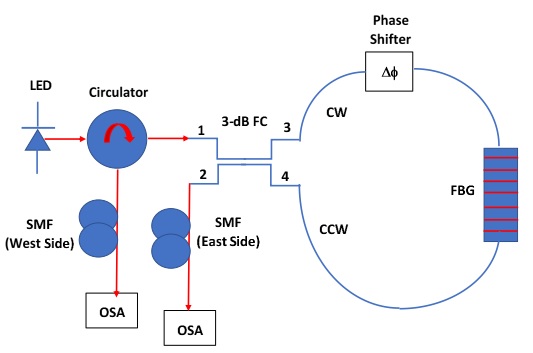DESCRIPTION
Fiber loop mirror configurations have been used in several different applications. One important application is sensing. Inserting a Fiber Bragg Grating (FBG) in the fiber loop mirror allows exploiting the switching feature of the loop mirror to enable enhanced sensing and accessing capabilities. A wideband LED or white source can be launched into the FBG loop mirror to create a continuous wave (CW) optical signal at the FBG center wavelength, which can be accessed from both sides of the loop by controlling the setting of a phase shifter device within the loop. The CW light wavelength changes with environmental conditions of the FBG (which include temperature, stress and strain).
Full Application Note & Webinar Link


